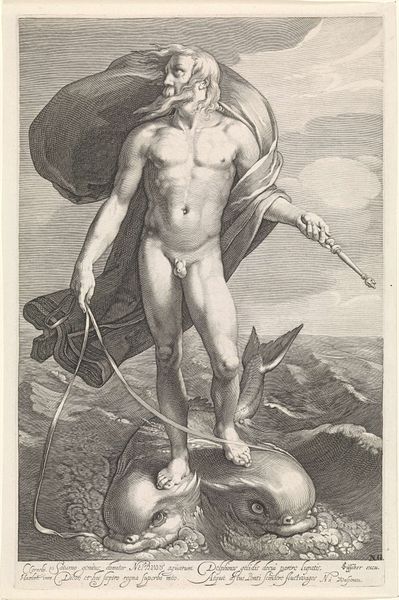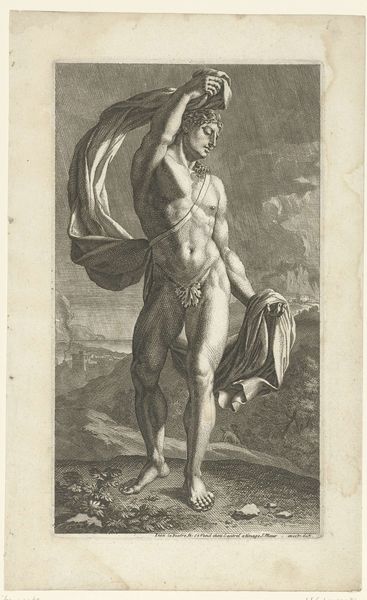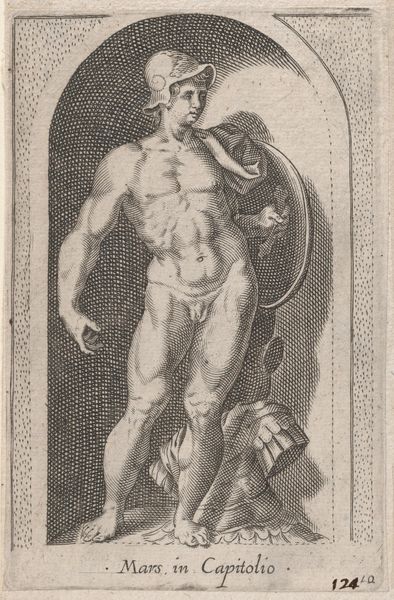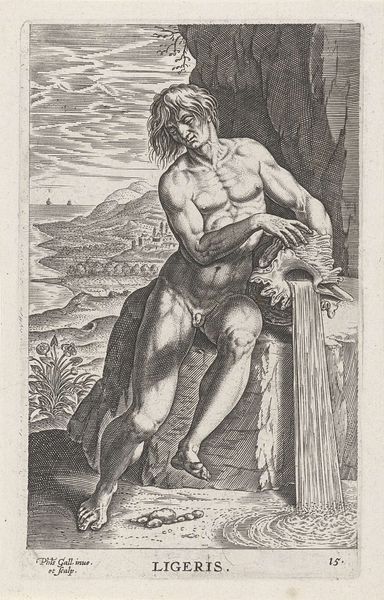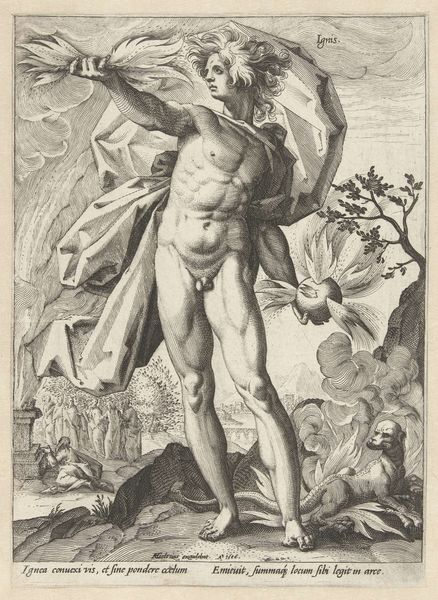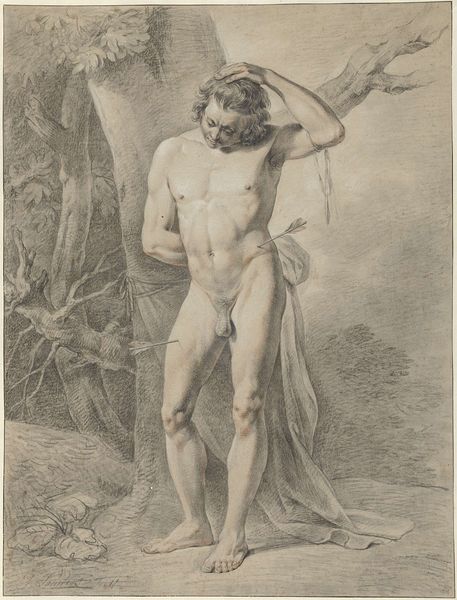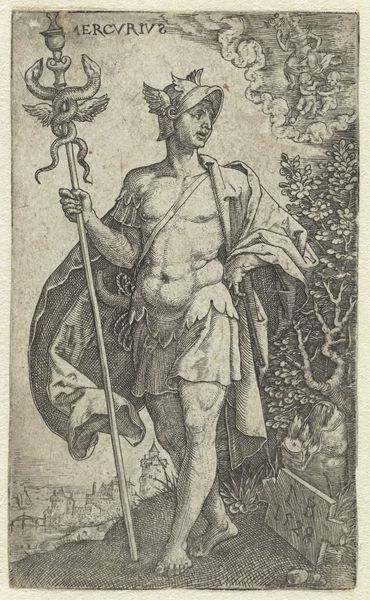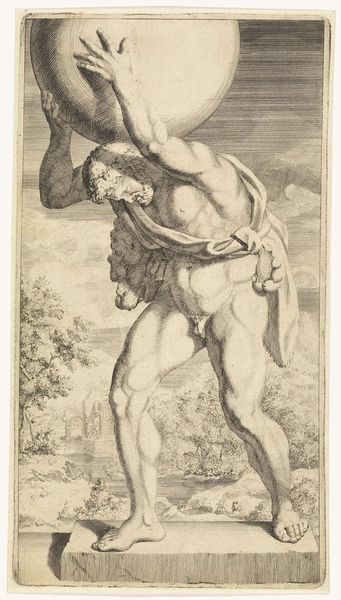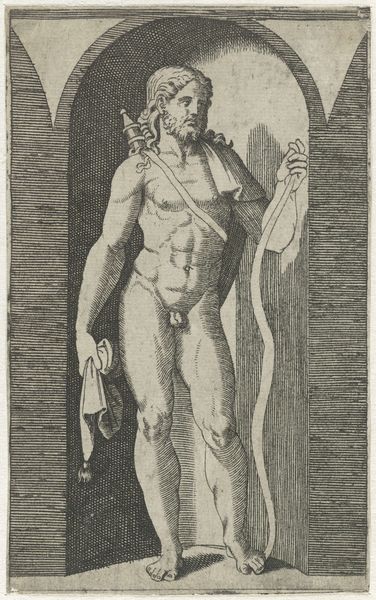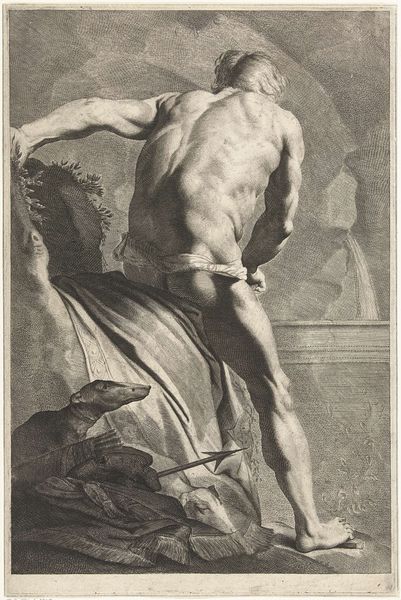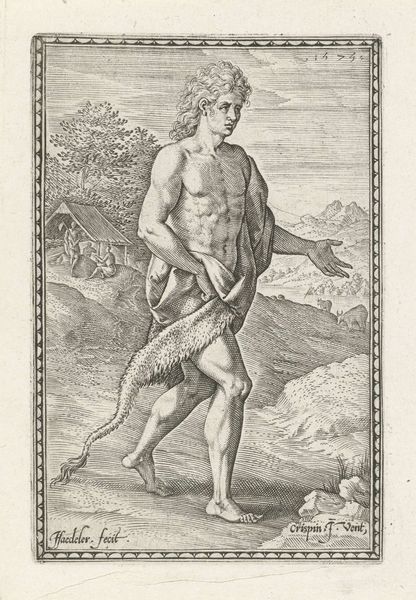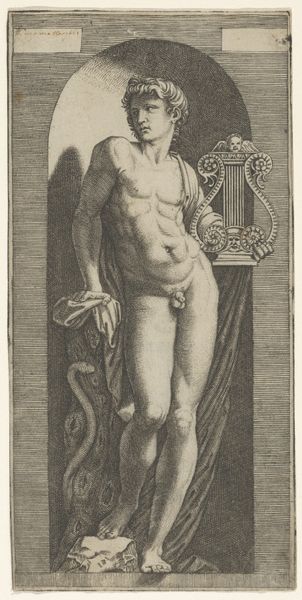
print, etching
#
baroque
# print
#
etching
#
figuration
#
history-painting
#
nude
Dimensions: height 339 mm, width 213 mm
Copyright: Rijks Museum: Open Domain
Curator: This is Lucas Vorsterman II’s “The Martyrdom of Saint Sebastian,” made between 1651 and 1652. It’s a print, using etching as the medium. Editor: It's such a stark image, especially with the contrast of light and shadow. It depicts Saint Sebastian tied to a tree, pierced by arrows. What strikes me is the lack of agony in his expression; it’s almost serene. How do you interpret this work? Curator: That's a crucial observation. Consider the Baroque period's relationship to the body – often portrayed as a site of intense drama and religious ecstasy. But here, Vorsterman seems to be grappling with something different. Sebastian's seeming lack of pain transcends simple stoicism. The gaze towards heaven isn’t just religious devotion, but an intersection of faith and queer desire. How does seeing it as such shift the work’s political message for you? Editor: I never thought about the queer aspect, but it definitely makes the composition feel very charged and more powerful. The arrows aren’t simply instruments of torture, but symbols laden with tension. And how the saint seems almost unbothered, challenges the viewers understanding of traditional religious painting. Curator: Precisely! Vorsterman utilizes the established visual language of martyrdom to open conversations about identity, sexuality, and the body, at a time when these subjects were repressed. He subtly undermines the singular, heteronormative religious narrative. The landscape behind Saint Sebastian and the sensuality are also significant: they give Saint Sebastian autonomy within a time when religious piety usually suppresses individuality. Editor: It's fascinating how a historical print like this can still spark such relevant conversations about identity and societal norms. Thank you, I have learned so much about Vorsterman’s background and cultural intersection. Curator: Indeed. Art from the past allows us to re-examine power structures in the present.
Comments
No comments
Be the first to comment and join the conversation on the ultimate creative platform.
